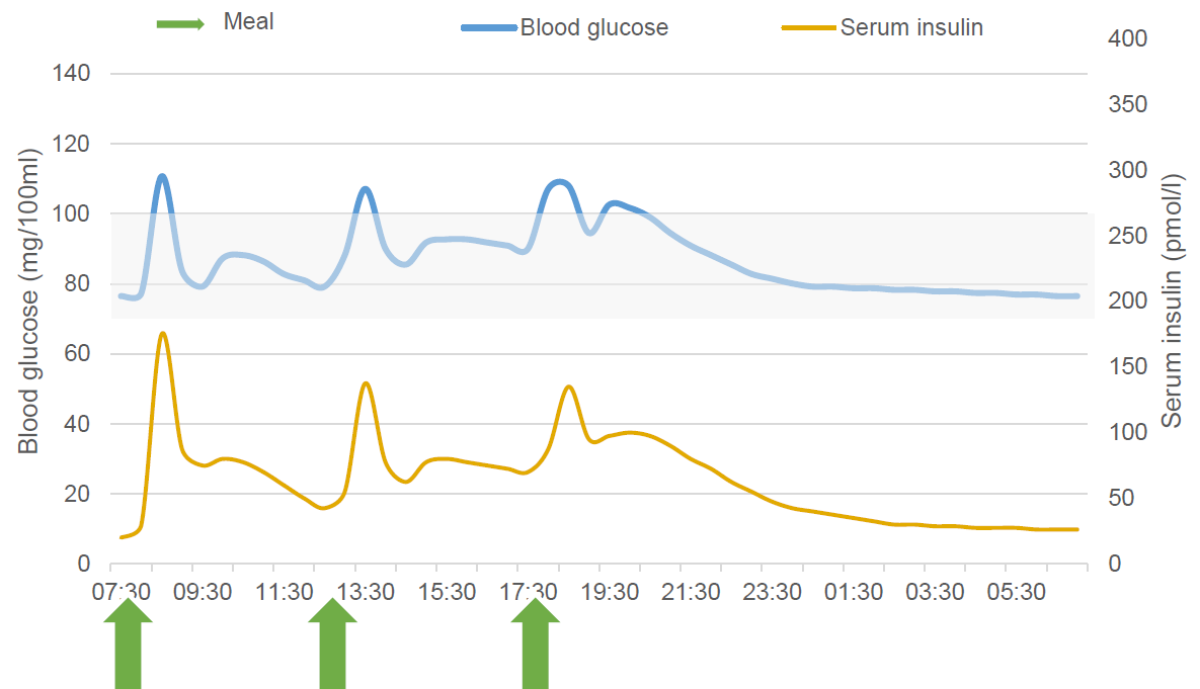PhD project Andrea Kiesewetter

PhD project Andrea KiesewetterReasoning about homeostatic feedback loop systems
Feedback loops are mechanisms of living systems that enable a system to maintain equilibrium. These mechanisms are responsible for maintaining homeostasis at the cellular level in the human body. Feedback loop reasoning is part of system thinking (Ben-Zvi Assaraf et al., 2013; Mehren et al., 2018). We define feedback loop reasoning as (1) skill to identify and describe feedback loop systems in their organization, (2) skill to analyze and apply the systems’ behavior, and (3) skill to develop regulative measures in order to achieve certain system states.
The concept homeostasis is difficult to grasp. It is challenging that underlying mechanisms and processes remain hidden from the eye (Tripto et al., 2016). Several processes and mechanisms occur simultaneously and balance each other (Modell et al., 2015). Previous studies figured out that students either did not identify feedback mechanism or did not refer to feedback mechanism in their reasoning processes (Sweeney & Sterman, 2007).

We want to investigate, how students reason in a homeostatic feedback loop system. In order to visualize the hidden dynamics, participants receive a representation that illustrates the underlying processes and relations. We examine students’ reasoning regarding blood glucose control by performing qualitative analyses on students’ thinking aloud protocols (Mayring, 2014). Thus, we can identify difficulty-inducing factors. In addition, we conduct a quantitative cross-sectional study. In doing so, we aim to empirically support the assumed dimensions as well as the factors that induce difficulty. Based on the expected findings it will be possible to develop instructional materials to support an elaborate feedback loop reasoning in homeostatic systems.
Project-based publication(s)
Wellmanns, A., & Schmiemann, P. (2020). Feedback loop reasoning in physiological contexts. Journal of Biological Education. Advance online publication. https://doi.org/10.1080/00219266.2020.1858929
Mambrey, S., Wellmanns, A., Timm, J., & Schmiemann, P. (2022). Systems Thinking in Ecological and Physiological Systems and the Role of Representations. In O. Ben Zvi Assaraf & M.-C. P. J. Knippels (Eds.), Fostering Understanding of Complex Systems in Biology Education (pp. 105–121). Springer International Publishing. https://doi.org/10.1007/978-3-030-98144-0_6
Kiesewetter, A., & Schmiemann, P. (2022). Understanding Homeostatic Regulation: The Role of Relationships and Conditions in Feedback Loop Reasoning. CBE Life Sciences Education, 21(3), ar56. https://doi.org/10.1187/cbe.21-04-0092
References
Ben-Zvi Assaraf, O., Dodick, J., & Tripto, J. (2013). High School Students’ Understanding of the Human Body System. Research in Science Education, 43(1), 33–56. https://doi.org/10.1007/s11165-011-9245-2
Mayring, P. (2014). Qualitative content analysis: Theoretical foundation, basic procedures and software solution. https://nbn-resolving.org/urn:nbn:de:0168-ssoar-395173
Mehren, R., Rempfler, A., Buchholz, J., Hartig, J., & Ulrich-Riedhammer, E. M. (2018). System competence modelling: Theoretical foundation and empirical validation of a model involving natural, social and human-environment systems. Journal of Research in Science Teaching, 55(5), 685–711. https://doi.org/10.1002/tea.21436
Modell, H., Cliff, W., Michael, J., McFarland, J., Wenderoth, M. P., & Wright, A. (2015). A physiologist's view of homeostasis. Advances in Physiology Education, 39(4), 259–266. https://doi.org/10.1152/advan.00107.2015
Sweeney, L. B., & Sterman, J. D. (2007). Thinking about systems: Student and teacher conceptions of natural and social systems. System Dynamics Review, 23(2-3), 285–311. https://doi.org/10.1002/sdr.366
Tripto, J., Ben-Zvi Assaraf, O., Snapir, Z., & Amit, M. (2016). The ‘What is a system’ reflection interview as a knowledge integration activity for high school students’ understanding of complex systems in human biology. International Journal of Science Education, 38(4), 564–595. https://doi.org/10.1080/09500693.2016.1150620
